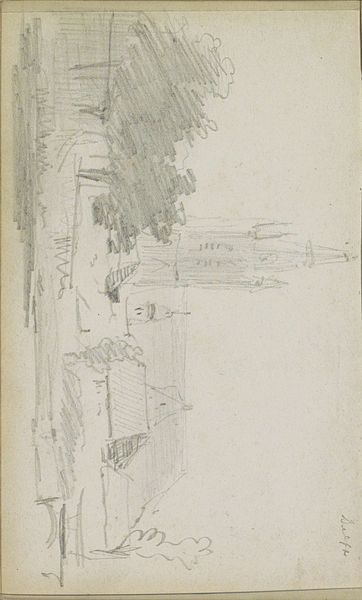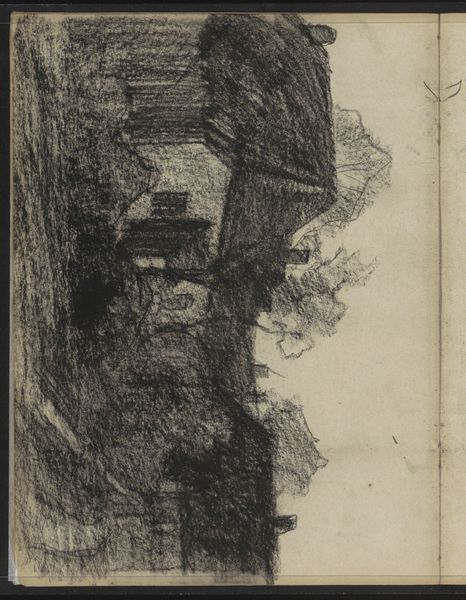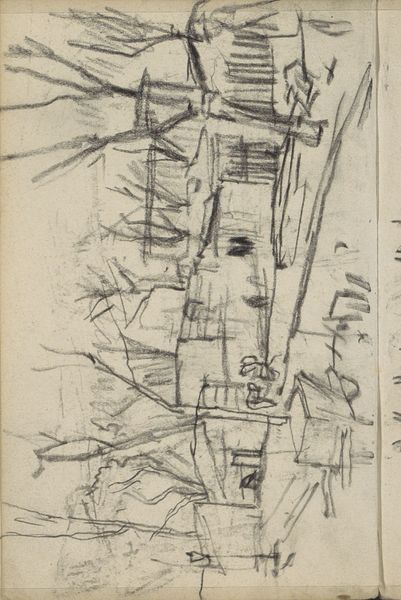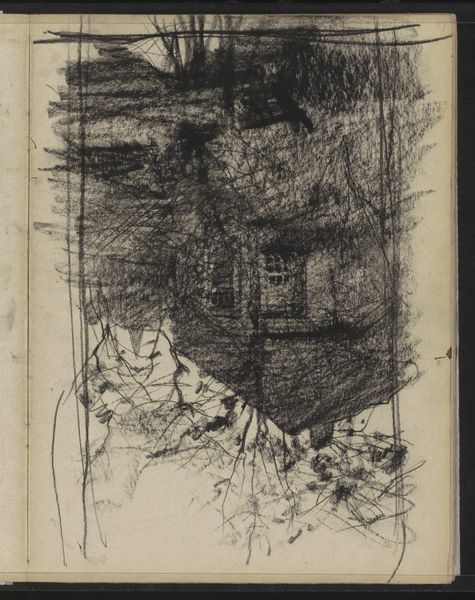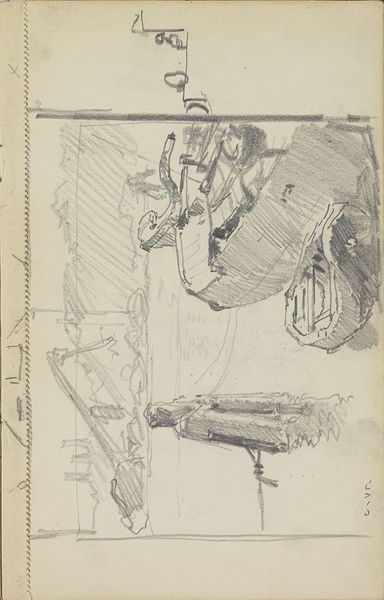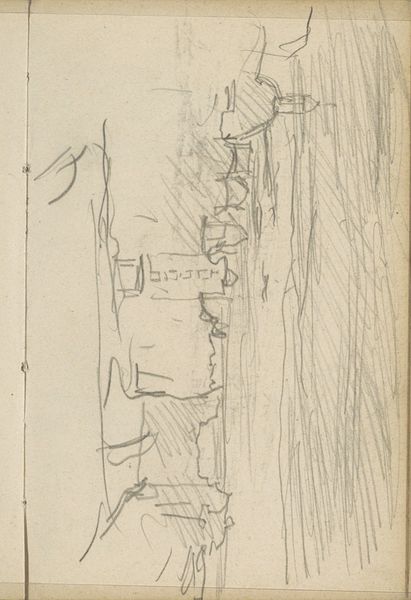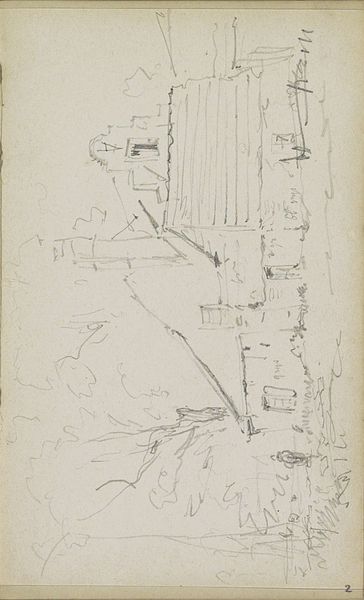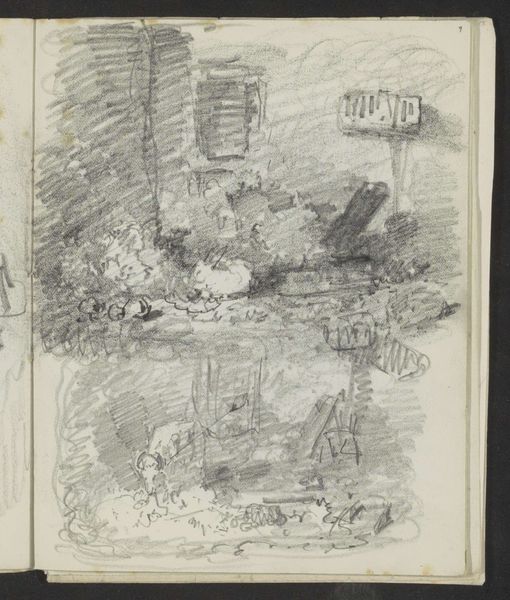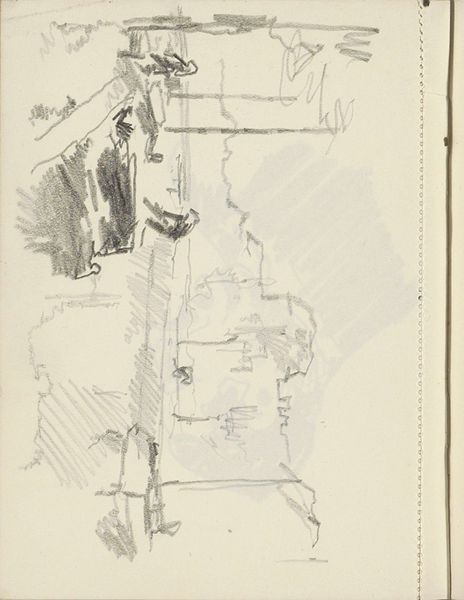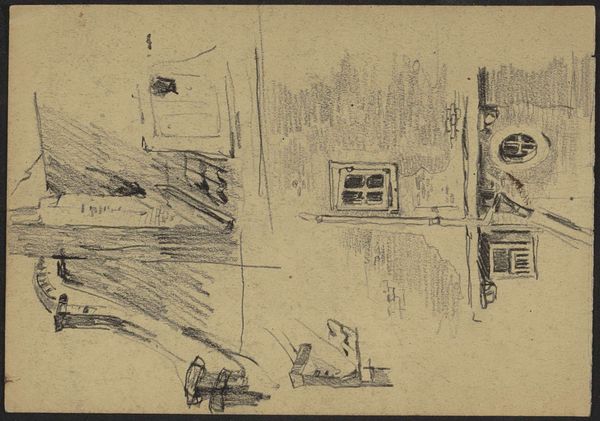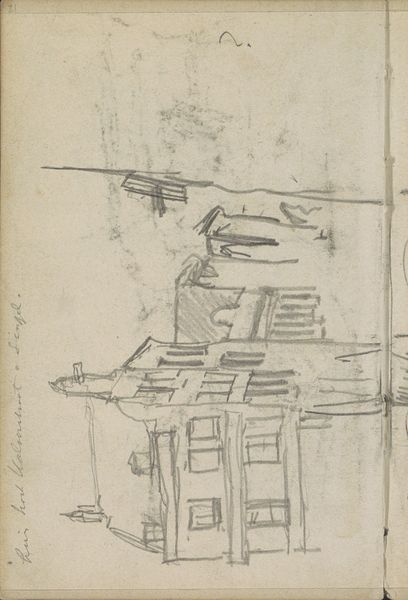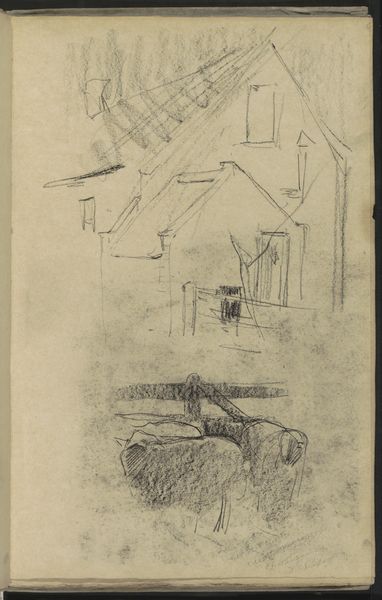
drawing, pencil
#
drawing
#
toned paper
#
dutch-golden-age
#
impressionism
#
pen sketch
#
sketch book
#
landscape
#
personal sketchbook
#
sketchwork
#
pen-ink sketch
#
pencil
#
pen work
#
sketchbook drawing
#
storyboard and sketchbook work
#
sketchbook art
Copyright: Rijks Museum: Open Domain
Curator: So, this is "Farm near a Bridge" by Willem Witsen, dating from around 1884 to 1887. It's a drawing done with pencil on toned paper, and it comes from the Rijksmuseum. The sketchiness has a really raw feel to it, and I am curious what your first impressions are. What do you make of it? Editor: I think it has an unfinished quality to it. The rough lines seem almost rushed, like a quick impression captured in a moment. It makes me wonder about the context of this farm. What was life like there? Curator: Precisely! Consider the social and economic landscape of the Netherlands during that time. The late 19th century was marked by significant shifts – industrialization, urbanization, and a growing awareness of social inequalities. Witsen, known for his involvement in artistic and intellectual circles, may have been drawn to this subject as a reflection of the changing rural landscape. Editor: So, you’re saying he might have been trying to capture a disappearing way of life? Curator: Potentially. Think about how art often functions as a form of social commentary. The farm, rendered with such visible brushstrokes, might symbolize a connection to the land and a critique of the burgeoning industrial society that threatened it. It invites us to question progress. What does advancement mean when it comes at the expense of tradition? Editor: That’s a great point. The bridge too – it’s this link between the rural past and, possibly, an industrialized future? Curator: Precisely. How does this piece resonate with our present concerns regarding sustainability and displacement, when it comes to communities on the fringes? Editor: It’s making me rethink my initial reaction to the "unfinished" quality of the work. Maybe that incompleteness is intentional, signifying a disruption of established traditions and an opening to new forms. Thank you. Curator: And it also reminds us to keep questioning whose narratives and lived experiences are present. It goes both ways, doesn’t it?
Comments
No comments
Be the first to comment and join the conversation on the ultimate creative platform.
